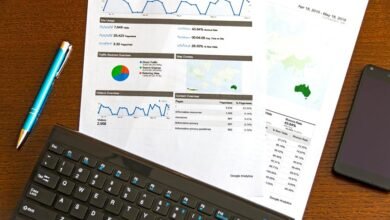Maximizing Financial Returns With Strategic Forecasting 3533321902

Maximizing financial returns through strategic forecasting requires a nuanced understanding of market dynamics. Organizations must employ analytical techniques to interpret quantitative data effectively. By establishing a robust forecasting framework, businesses can enhance their agility and operational efficiency. However, the real challenge lies in adapting these strategies to unpredictable market shifts. What methodologies can be employed to ensure adaptability while optimizing returns? The exploration of these questions reveals the intricacies of strategic forecasting.
Understanding the Basics of Strategic Forecasting
Although strategic forecasting may seem complex, it fundamentally involves the systematic analysis of data to predict future market trends and financial performance.
This process integrates financial modeling to create projections and simulations, enabling organizations to visualize potential outcomes.
Additionally, effective risk assessment identifies uncertainties, equipping decision-makers to navigate volatile environments.
Thus, strategic forecasting empowers businesses to optimize returns while maintaining a sense of autonomy and adaptability.
Key Techniques and Tools for Effective Forecasting
A variety of techniques and tools exist to enhance the effectiveness of forecasting in financial contexts.
Quantitative analysis provides a robust framework for data interpretation, enabling analysts to identify trends and make informed predictions.
Moreover, effective trend identification allows organizations to anticipate market shifts and adjust strategies accordingly.
Implementing a Strategic Forecasting Framework
While many organizations recognize the importance of forecasting, effectively implementing a strategic forecasting framework remains a critical challenge.
This process necessitates robust data analysis to identify trends and inform decision-making. Additionally, integrating risk assessment mechanisms ensures that potential uncertainties are managed proactively.
Case Studies: Successful Applications of Forecasting in Business
Organizations across various industries have successfully leveraged forecasting to drive strategic decision-making and enhance operational efficiency.
For instance, retail giants utilize demand forecasting to optimize inventory levels, leading to significant cost savings.
Similarly, financial institutions deploy predictive analytics to improve risk management.
These industry examples highlight the forecasting benefits, demonstrating its critical role in maximizing financial returns and fostering adaptive business strategies.
Conclusion
In the dynamic realm of business, the juxtaposition of informed predictions against unpredictable market shifts reveals the critical role of strategic forecasting. While many organizations flounder in uncertainty, those that embrace robust financial modeling and risk assessment not only weather the storm but thrive amidst it. By optimizing returns and enhancing decision-making processes, strategic forecasting transforms potential volatility into opportunity, underscoring the stark contrast between stagnation and proactive adaptation in an ever-evolving economic landscape.





